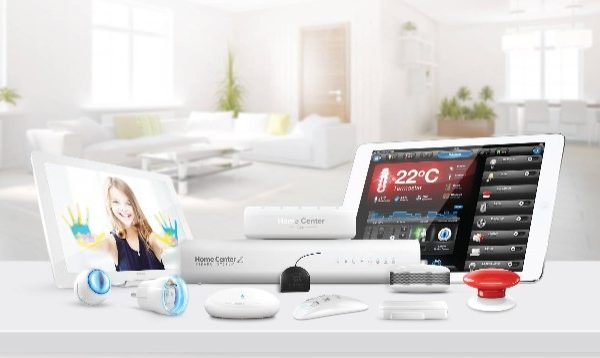Electricians handle many tools. Among them, nothing shapes the neatness and speed of an installation quite like a well-placed cable wire. As homes and buildings grow more complex, the need for smart, tidy wiring grows as well. Electricians turn to materials that help them keep up with demand, maintain safety, and complete jobs with pride. One solution stands out—PVC Trunking.
This article explores why PVC trunking plays such a key role in modern electrical work. We’ll walk through the features, benefits, use cases, and even compare it with other cable management tools. If you work with wires, plan a project, or want to understand your home’s electrical layout, read on.
What Is PVC Trunking?
PVC trunking refers to a rigid plastic channel that houses electrical wires. Its purpose is simple—to contain and route wires safely and neatly. Most trunking pieces include a lid that snaps shut. Installers can run wires inside, close the cover, and mount the channel on walls or ceilings.
PVC stands for polyvinyl chloride, a lightweight yet sturdy material that resists wear, moisture, and heat. Builders use it across industries—from water pipes to floor tiles—because it performs well under pressure.
Benefits of Using PVC Trunking
Let’s explore why professionals prefer this system over loose cabling or exposed runs.
1. Quick and Easy Installation
- Electricians value time. They need solutions that install fast without risking safety. PVC trunking snaps into place with simple tools. Installers can cut it to length with a saw, fix it using screws or adhesive, and slot in wires without delay. This process saves hours compared to chiselling walls or using conduits.
2. Clean and Organised Finish
- A web of exposed wires clutters a room. It also invites dust and damage. With trunking, you create straight, crisp lines. The room looks tidy. Residents feel safer and more at ease. Neatness matters in both homes and offices.
3. Easy Access for Maintenance
- Troubleshooting electrical faults often means retracing wire paths. Trunking systems allow electricians to open the cover and view the wiring inside without hacking into walls. That speeds up fault-finding and avoids structural damage.
4. Safety and Protection
- Trunking shields cables from contact, heat, and sharp edges. This lowers the chance of cuts, sparks, or exposed wiring. It also keeps curious fingers—especially children’s—away from risk.
5. Adaptable to Any Space
- You can install PVC trunking on walls, ceilings, under desks, or across uneven surfaces. It bends, turns, and changes direction with help from joints and corner pieces. This adaptability makes it ideal for retrofits and extensions.
How Electricians Use PVC Trunking on the Job?
In practice, electricians use trunking in both residential and commercial settings. Here are some examples.
Home Installations
- Mounting TV cables along walls
- Running wires from the router to the rooms
- Connecting light switches to ceiling fixtures
- Concealing speaker wires in home theatres
Office and Retail Settings
- Organising computer station wiring
- Routing power from floor boxes to desks
- Supporting emergency lighting circuits
- Laying out network cables for data systems
In each case, the goal stays the same: direct, protect, and simplify.
Choosing the Right Size and Type
PVC trunking comes in various sizes and styles. Choosing the right one means considering the number and type of wires, the installation space, and the expected load.
Here’s a comparison table to guide your decision:
|
Trunking Size (mm) |
Common Use |
Wire Capacity |
|
16 x 16 |
Small gadgets, sensors |
1–2 light cables |
|
25 x 25 |
Light fixtures, single sockets |
2–3 cables |
|
40 x 40 |
Multiple outlets, routers, and switches |
4–6 cables |
|
50 x 50 and above |
Offices, home media centres, and panels |
Large cable bundles (8–12) |
This table simplifies planning. Always allow space for airflow and ease of future upgrades.
Comparison with Other Cable Management Systems
Electricians don’t use trunking alone. Other systems exist—conduits, cable trays, and raceways. Let’s compare them briefly.
|
System |
Material |
Use Case |
Strength |
Limit |
|
PVC Trunking |
Plastic |
Homes, light industry |
Quick to install, clean look |
Not load-bearing |
|
Metal Conduit |
Steel |
Industrial setups |
Strong, heat-resistant |
Harder to cut and bend |
|
Cable Tray |
Metal/plastic |
Server rooms, large sites |
Supports many heavy cables |
Bulky, needs space |
|
Flexible Conduit |
Plastic |
Curves, temporary layouts |
Flexible, useful in corners |
May sag or twist over time |
Trunking suits most indoor uses where aesthetics and speed matter. It may not support heavy-duty industrial applications, but it handles everyday needs with ease.
Trends in Electrical Cable Management
Modern buildings continue to evolve. So do the needs of electricians. Three major trends shape the use of trunking systems today.
1. Modular Design
- Some trunking products now include snap-on accessories—sockets, switches, or data ports—that plug straight into the channel. This reduces external mounts and cuts build time.
2. Colour Coding
- Coloured trunking helps label systems by function. For example, red for fire alarms, blue for data, and white for power. Electricians identify systems faster and reduce confusion.
3. Green Buildings
- Trunking now uses recyclable PVC. This appeals to projects aiming for green certification. Electricians and designers both support this shift.
Installation Tips from the Field
A smooth installation takes planning and precision. Here are field-tested tips from seasoned electricians:
- Measure twice, cut once – Misjudged cuts waste material and slow the process.
- Use a laser level – Keep lines straight and avoid sloped installs.
- Pre-label all wires – Before inserting into trunking, mark each cable.
- Plan junctions early – Corners and changes in direction need fittings. Buy extras.
- Leave room for growth – Always install trunking with space to spare for future wires.
These practices reduce mistakes and save rework.
Maintenance and Upkeep
PVC trunking requires little attention once installed. Still, checking it every few years ensures safety.
Inspect for:
- Loose covers or brackets
- Discoloured or brittle sections
Blockages from dust or pests - Overstuffed segments where cables may overheat
Small touch-ups—like replacing end caps or retightening screws—keep systems tidy and safe.
When to Replace Trunking?
Though trunking lasts many years, certain signs suggest it’s time to replace parts.
- Warping due to heat or age
- Broken lids or cracked walls
- Cables spilling out from overuse
- Incompatibility with upgraded systems
Rather than patching endlessly, replacing an old run ensures long-term function.
Safety Guidelines to Follow
Safety matters every time wires meet walls. When using PVC trunking for electrical cable management, follow these key rules:
- Keep power cables separate from data lines
- Avoid overfilling the trunking
- Mount securely—loose trunking creates hazards
- Ensure cables remain undamaged during insertion
- Use only flame-retardant certified products
Following these rules not only protects property, it protects lives.
Final Thoughts
Electricians need reliable tools. PVC Trunking delivers simplicity, speed, and neatness. It supports safety, matches modern expectations, and suits the evolving needs of homes and offices. Whether laying a single cable wire or building an entire network, trunking brings control to the chaos.
Using PVC trunking for electrical cable management helps tradespeople meet deadlines, impress clients, and work with pride. It gives homeowners peace of mind. And as technology continues to fill homes with wires, PVC trunking ensures that those cables remain out of sight—but never out of control.








